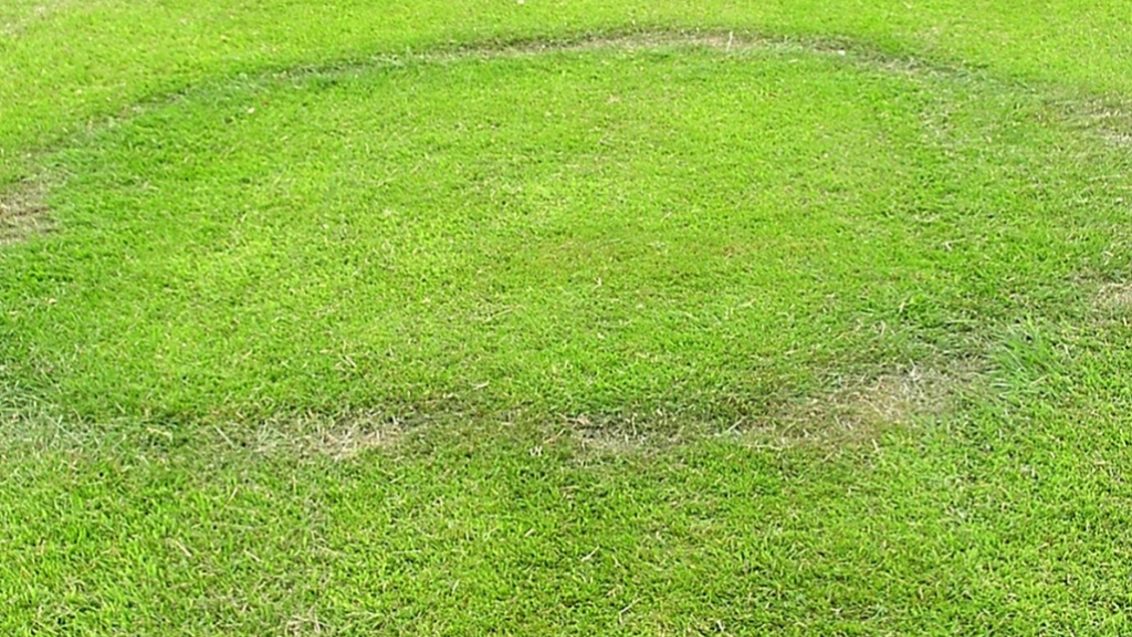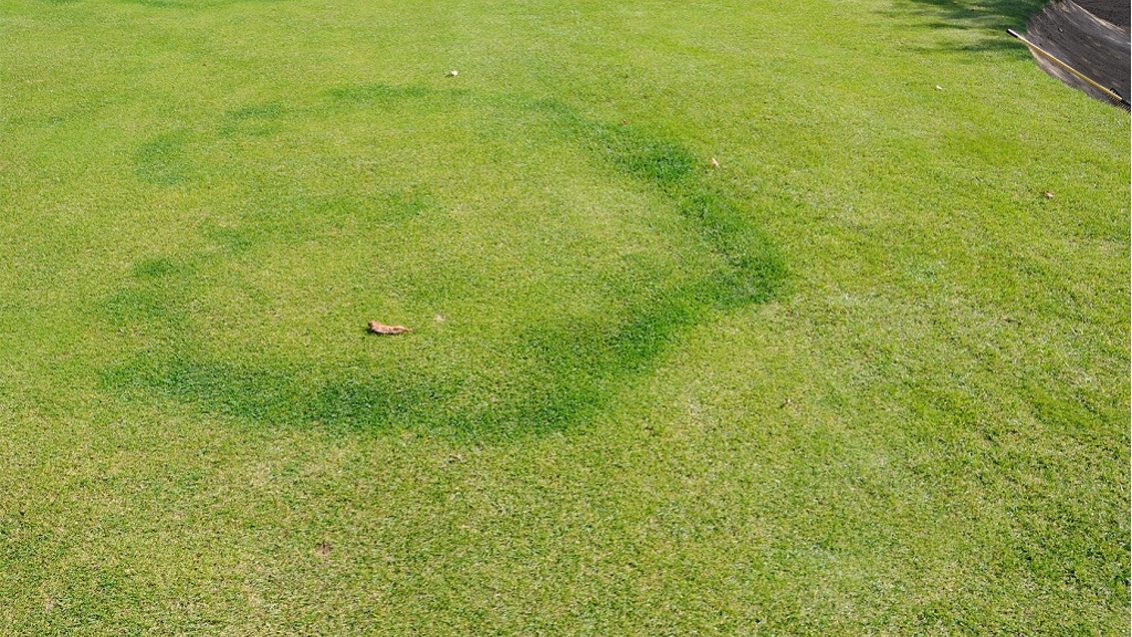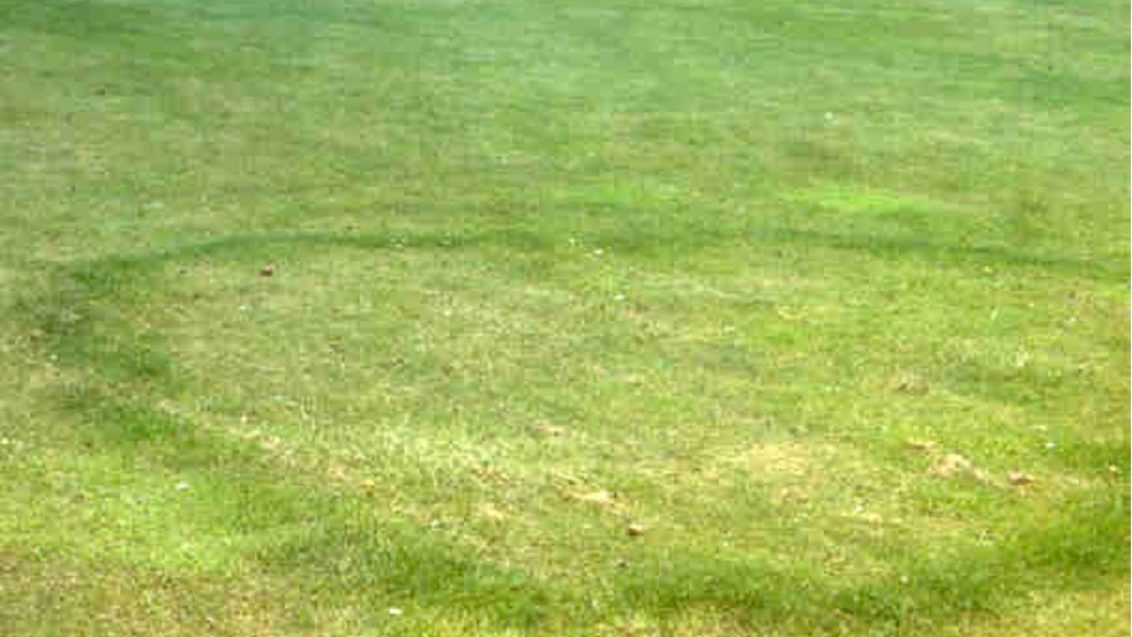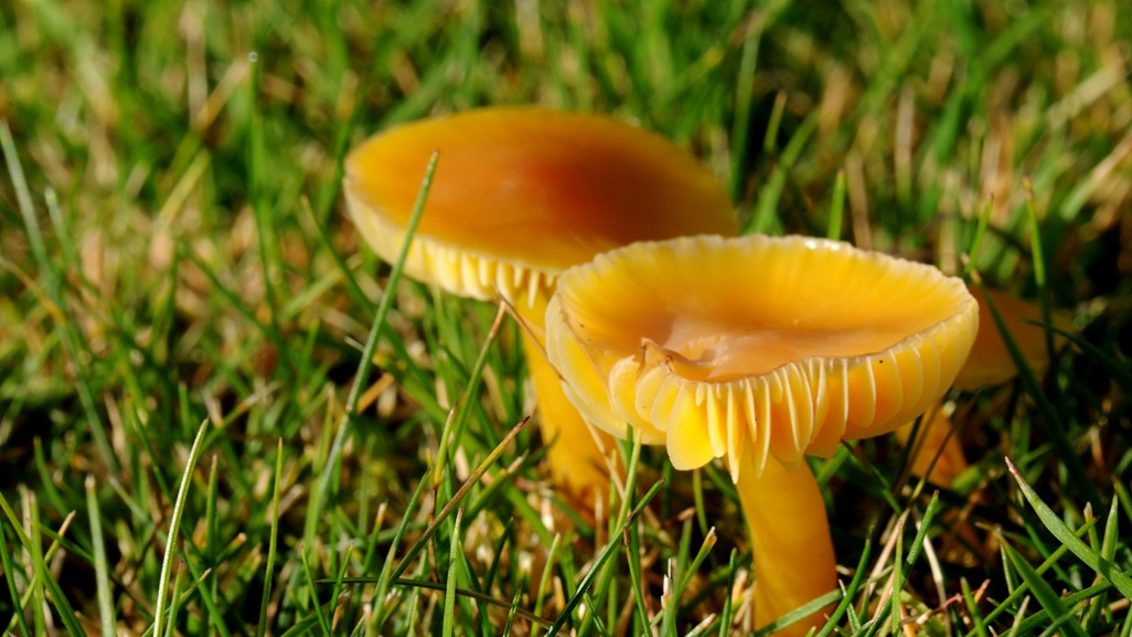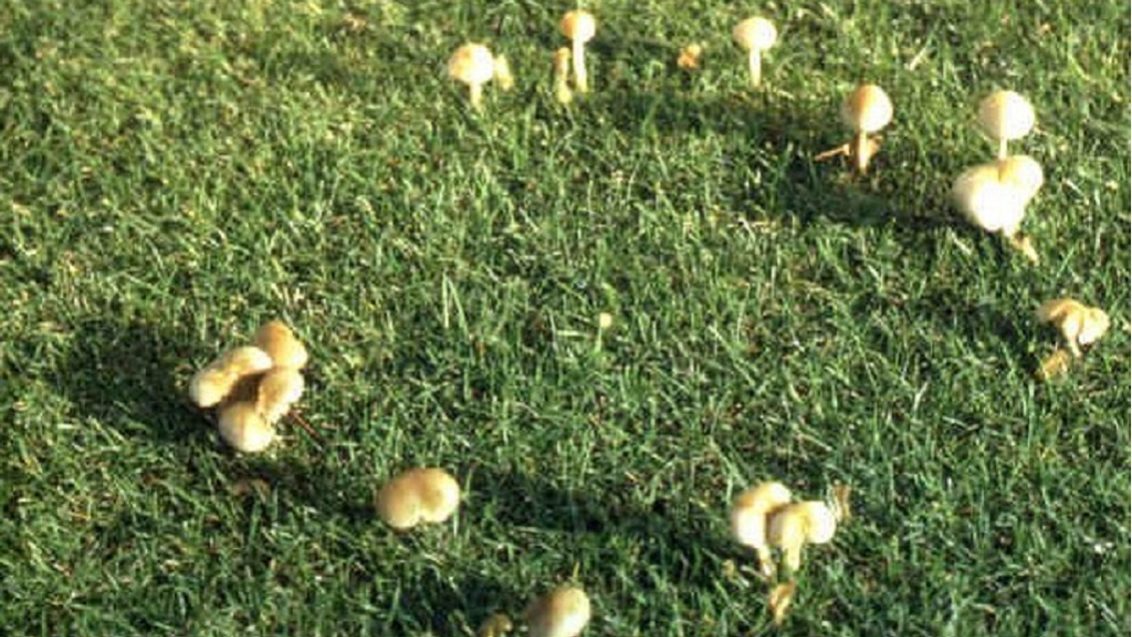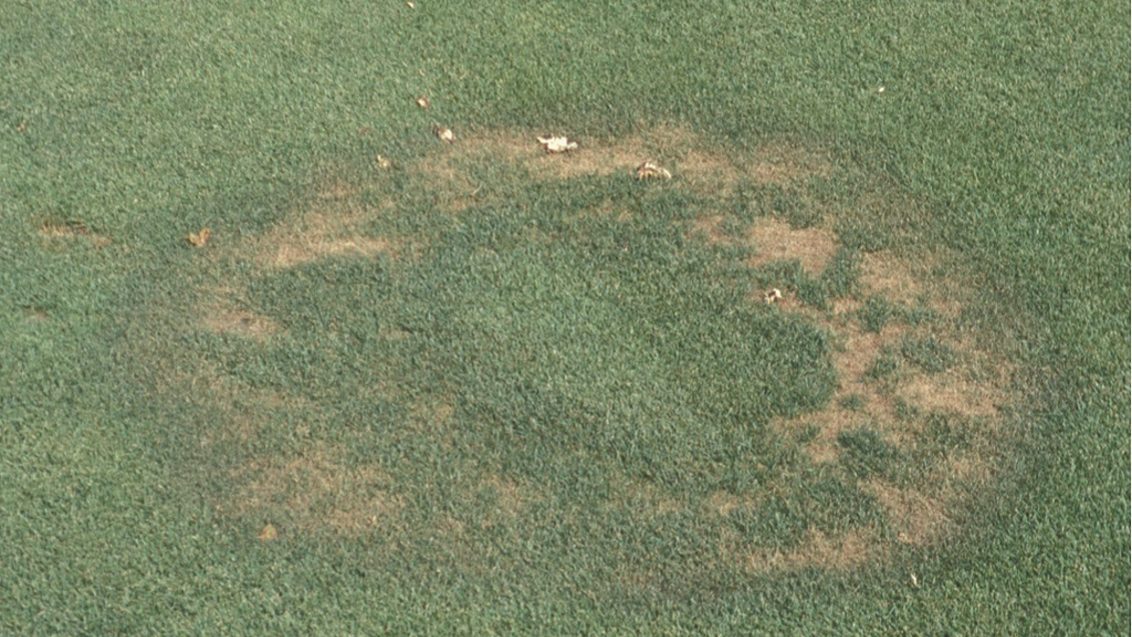Fairy Rings
Turf Disease
Caused by: Basidiomycetes of more than 50 species on native soils can cause fairy ring symptoms; some of the more common agents include: Agaricus campestris; Chorophyllum molybdites; Collybis spp.; Hygrocybe spp.; Lepiota spp.; Marasmius oreades; Bovista spp.; Scleroderma spp.; Tricholoma spp.; Lycoperdon clitocybe; Agrocybe spp.; Corprinus comatus; and other species.
Fungal species occurring on sand-based greens are not as diverse, Lycoperdon spp is most common.
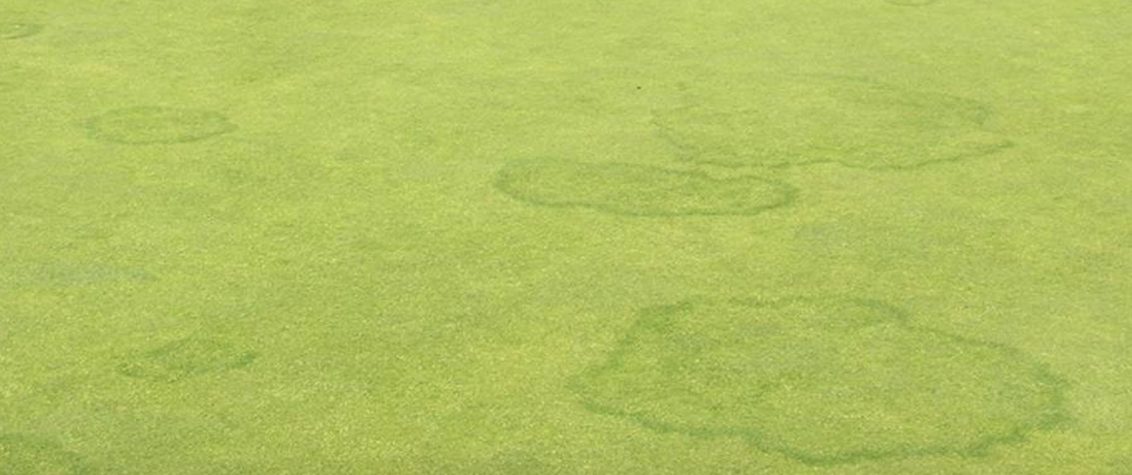
Susceptible turfgrass
All species of warm- and cool-season turfgrass.
Description
Fairy ring symptoms vary with causal agents and the environment. Above-ground mushroom and puff ball basidiocarps may or may not occur. Typically, turf symptoms can appear as outer rings that are either dark-green or brown in colour. The symptoms may be hydrophobic rings or circular areas showing the first signs of wilt. The shape and size of the rings vary depending on the species and environmental conditions. Activity in the turf may subside when the individual rings come in contact with each other. Some causal agents form fruiting bodies (i.e. mushrooms), but do not form rings.
Conversely, other causal agents will form rings, but not fruiting bodies. The fungi that result in fairy ring symptoms may be confined to the soil or the thatch
area or both. Upon taking a soil profile, an orange discolouration along the root zone may be present with or without a strong mushroom odour.
Conditions favouring disease
Fairy rings typically occur when the turfgrass is most actively growing. This disease can also occur on cool-season turfgrass in mild winter climates. In warm climates, fairy ring inhabiting Bermudagrass can decrease over-seed germination and stands in these areas due to hydrophobic areas limiting water availability for the germinating seed.
Integrated turf management
- Avoid using root zone mixes with high levels of undecomposed organic materials.
- Reduce thatch by vertical cutting.
- Core aerify.
- Irrigate deeply.
- Use nitrogen fertiliser to mask symptoms on some types of Fairy Ring.
- Use soil wetting agents/soil surfactants to help alleviate hydrophobic soil conditions.
Fungicidal control
Heritage as label recommendation for fairy ring control in South Africa.

